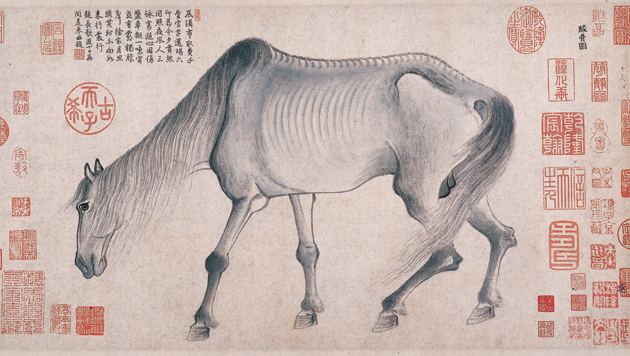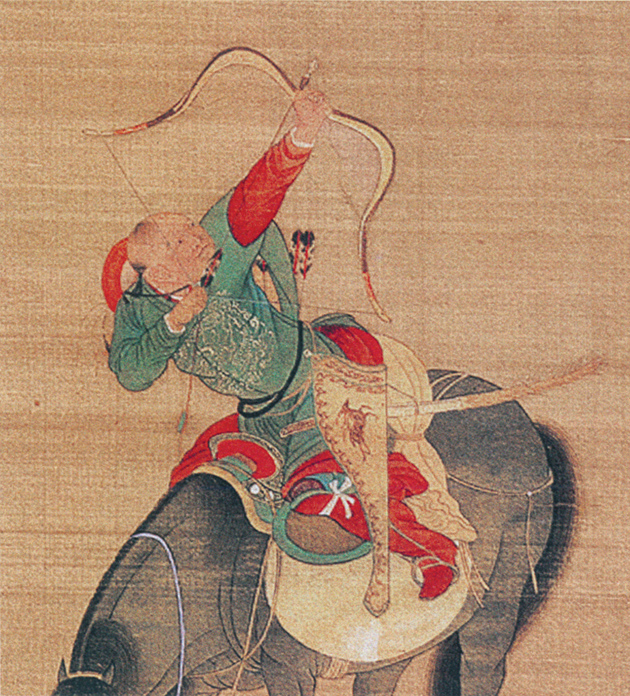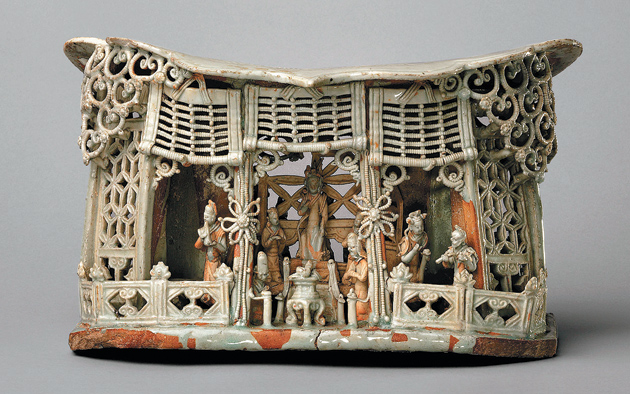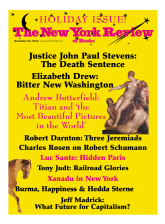1.
The Mongols inhabited a vast, featureless grass plain where the soil was too thin for crops. They raised horses, cattle, yaks, sheep, and goats, and subsisted almost entirely on meat and milk and milk products. The women milked the cows and the men milked the mares. They had no fixed houses and lived in yurts made of greased felt that they hauled on ox-drawn carts. Inside the yurts, hunks of meat hung on the horns of goats. They never washed their clothes or washed their vessels; bathing in running water was punishable by death. The women were excellent equestrians and archers, but female corpulence was prized and the wealthiest among them became too obese to ride. They had no written language and only rudimentary skills in metallurgy; unlike the Crusaders, they never made horseshoes. Their human genius was in military organization and tactics, and in politics as war by other means.
Nomads continually need greater territory for fresh pasture, and the peoples of the grasslands—Mongol, Tatar, Merkit, Uriyankat, Oirat, Tumet, Kerait, Naiman, Ongut—were at war for centuries. As early as the third century BCE, the settled and agricultural Chinese had begun construction of the Great Wall to keep them out. This was only sporadically successful. By the thirteenth century, the Tanguts in the northwest had already founded the Xi Xia Dynasty, and most of the rest of northern China was under control of the Jurchens, who had established the Jin Dynasty after conquering, in turn, the Liao Dynasty, ruled by another northern tribe, the Khitan.
In 1206, a Mongol of obscure birth, Temüjin, after much internecine warfare, united the tribes of the steppes and was declared the Chinggis (Genghis) Khan, the “universal ruler.” Within a few decades, he and his successors controlled an empire that stretched from Korea to Poland. They destroyed dynasties that had governed for centuries and some of the most cosmopolitan and sophisticated cities on earth. Samarkand and Bukhara never recovered their glory; in the Silk Road city of Merv, perhaps the largest in the world, a million and a half people were killed; in Balakh, it was said that only a few dogs were left barking in the empty streets. Moscow and Kiev, Isfahan and Damascus fell; 800,000 were killed in Baghdad; a million in Chengdu; in Aleppo only the craftsmen were spared; in Poland they cut off one ear of every surviving male and collected them in bags. It was merely the fortuitous deaths of Chinggis’s successors that kept them out of Egypt and Europe all the way to the Atlantic.
The Mongols overran one fifth of the earth with forces inferior in number, but unmatched in military tactics and political skill. Among warring kingdoms, they would join with one side to defeat the other, and then destroy their ally. Unlike the Arab nomads who conquered in the name of Islam or the European Crusaders who fought for Christ, the Mongols had no ideology. They founded no civilization; they only devastated cultures or let them be. After Chinggis vanquished the Xi Xia and Jin dynasties, he planned to kill all the people and turn the entirety of northern China into pasture land for his horses. He was persuaded that it would be more lucrative to allow the Chinese to continue their livelihoods and simply tax them.
Khans succeeded to the throne by tanistry—elected by a convocation of chieftains—not inheritance, though the khans had so many children with their wives and concubines that successors were normally blood relatives who had defeated or killed their brothers or cousins. By 1260, when Chinggis’s grandson Khubilai was declared the Great Khan, the empire was already divided into four vast tracts under semiautonomous command. Khubilai nominally ruled them all, but he directly controlled the eastern and richest sector: northern China, Korea, Tibet, and Mongolia itself.
Khubilai was a warrior shepherd ruling the most advanced civilization on earth at the time. In his kingdom there were a few hundred thousand Mongols, most of them in Mongolia itself, and some ten million Chinese, who unsurprisingly did not welcome yet another foreign occupation. The genius of his success was that he simultaneously weakened the power of the Chinese while increasing his popularity by making himself seemingly more Chinese, although he couldn’t read and could barely speak the language.
He moved the capital of the empire south and east from Khara Khorum in Mongolia, first to Shangdu (the Xanadu of Marco Polo and Coleridge, of which only a few stones and broken statues remain) and then to the former Jin Dynasty capital of Zhongdu (the Central Capital, present-day Beijing). He renamed it Dadu (the Great Capital) and built a magnificent city in the Chinese style with the tens of thousands of artisans who had been forcibly relocated from various corners of the Khanate. He lived like a Chinese emperor, though he preferred to sleep in a yurt on the palace grounds, and in 1271 proclaimed a new dynasty, the Yuan.
Advertisement
Yuan meant “origin”—as in “back to the origins”—and Khubilai revived ancient Confucian court rituals and had a dynastic history written in the traditional manner to justify its heaven-endowed legitimacy. His greatest claim as a Chinese emperor was that the Yuan eventually unified the country as it had not been in centuries. The Jin Dynasty had conquered half of the Song Dynasty, but the southern portion continued on for 150 years. The Southern Song, a wealthier and more populated region, with some 50 million people, had become weak and bankrupt as—in a pattern that has become all too familiar—the rich managed to legally avoid paying taxes while military expenses greatly increased. Nevertheless, it took years for Khubilai to conquer them and he never overcame their resentment, for the southerners were unaccustomed to foreign occupation and Confucian wisdom dictated that one must remain loyal to one’s original master. The rich, however, were allowed to keep their lands and were not unhappy to become even richer through the prospering sea and land trade.
To lessen the political power of the Chinese majority, Khubilai abolished the examination system, which traditionally had been the only way to rise into and through the bureaucracy. The exams were based on a knowledge of the Confucian classics and it was unlikely that non-Chinese would be able to pass; appointments were now made under the Mongol system of personal recommendations. A four-tier system was created. At the top were, of course, Mongols, who were more or less forced to keep their identity. They were forbidden to marry Chinese, or even to speak the language. Official proceedings were done through interpreters, though Khubilai unsuccessfully attempted to introduce a new, alphabetic form of writing, devised by a Tibetan monk, that could represent the sounds of all the languages of the empire.
Next in the hierarchy were the “colored-eyed people,” the foreigners, largely from western Asia. One could now travel safely by land from the eastern Mediterranean to the China Sea, and merchants poured in, welcome as long as they exchanged their gold and silver for Khubilai’s paper currency. Many of them—including Marco Polo, if he is to be believed—were given government positions.
Third were the northern Chinese, and fourth, the least trustworthy of all, the southern Chinese. Power in that other political force—organized religion—was kept in check by promoting all of them and favoring none. Along with adherents of the traditional Three Teachings (Confucianism, Taoism, Buddhism) there were Nestorian Christians, Manichaeans, and Muslims. Among the Buddhists, preference was shown for the Tibetan version, which was more appealing to Khubilai with its magical powers and politically motivated lamas than the more contemplative Chinese schools of Chan (which became Zen in Japan). There were, however, instances of religious repression: periodically against the Muslims, who were overenthusiastic collectors of taxes, and once against the Taoists, when Khubilai sided with the Buddhists in a dispute and ordered Taoist temples to be evacuated and the books of their canon burned.
Whether Khubilai was crueler than previous Chinese emperors is subject to debate. He created a comprehensive surveillance system of his citizens unmatched until the time of Mao, but he executed fewer officials. In the wars he fought, he was responsible for the deaths of hundreds of thousands, perhaps millions, including his disastrous campaigns against Annam and Champa (in present-day Vietnam), where his horses could not survive the jungle, the Kingdom of Java, and Japan, where nine hundred of his ships with the corpses of naked Japanese women nailed to the sides were destroyed by a combination of samurais and the kamikaze (divine wind) of a typhoon, whose symbolism would resurface in Japanese propaganda in World War II.
His later years were an autumn of the patriarch. He lost his favorite wife and favorite son, became grotesquely fat, suffered from gout and other ailments, and was detached from governing. He held huge and endless banquets of meat and koumiss, fermented mare’s milk, and was in a near-continual state of inebriation. More and more of his time was spent in the summer palace of Shangdu, which was largely a hunting reserve. There, four elephants would carry him, lying on a couch, in a gold-plated palanquin decked with tiger skins, accompanied by five hundred falconers and leopards and lynxes trained to chase down bears and wild boars.
He died in 1294 and was succeeded by twelve khans in turn, including ten in one seventeen-year span. China was wracked with natural disasters: unusual cold in what is now known as the Little Ice Age, famines every two years, floods, swarms of locusts, the earthquake of 1303 that killed at least a half a million, and epidemics of typhoid, smallpox, and bubonic plague. (It was the Mongols who brought the Black Death to Europe in the fourteenth century, which some epidemiologists trace back to the fleas on the Mongolian gerbils of the steppes.) It is probable that the total population dropped by tens of millions. In the Chinese obsession with the harmony of Heaven and Earth, with the emperor as the Son of Heaven who assures order, it meant that the universe was out of whack, that there was a moral disorder as much as a physical one. In 1368 the dynasty collapsed in the usual chaos and a new dynasty, the Ming, was declared.
Advertisement
2.
The great museums are little empires, ruled by tyrannical or benevolent emperors, with the plunder of the world arranged geographically: the Great Powers of history centrally located and the more remote corners of the earth usually accessible only through a labyrinth of corridors, stairs, and elevators. Small wonder, then, that museums so often pitch their blockbuster shows on empires themselves and, when possible, charismatic emperors.
“The World of Khubilai Khan” at the Metropolitan Museum is no exception. Khubilai—thanks to Marco Polo, Coleridge, and a thousand cheesy discos called Xanadu—is a brand name of sorts. It hardly matters that Marco Polo may never have gone to China and that Coleridge’s opium dream—beyond the “stately pleasure dome” of the first lines—was also an amalgam of his readings of actual and fantastic accounts of travel in Florida, Kashmir, and on the Nile. Blockbusters have to sell tickets, and the Met is even luring visitors with a Patti Smith “tribute to Xanadu” concert.
The exhibition itself is a majestic array of paintings, sculpture, calligraphy, ceramics, textiles, and assorted knicknacks, gathered from museum collections—mainly in China—and beautifully and dramatically presented. So perhaps it is pedantic to note that little of this has anything to do with Khubilai Khan. Most of the works were created before or after his reign, often in lands that were not then under his control. Nor is the subtitle of the show, “Chinese Art in the Yuan Dynasty,” exactly accurate, as there are many works from the Jin, Xi Xia, and Southern Song. To put it another way, according to Met typology, we are still living in the World of Franklin Roosevelt, a world that began about the time of the Civil War and includes the artworks of Mexican muralists and Haitian folk painters.
The received wisdom on the Yuan Dynasty has been that, however wealthy from trade, it was a semi-barbaric time, vastly inferior to the refined accomplishments of the Song. Artisans were prized over artists, the tradition of court patronage of the arts and educating emperors in connoisseurship was largely ended, and the intellectual class was attenuated with the end of the examination system. The Met has gone to the other extreme, claiming that “artistically the Yuan was one of the most brilliant periods in Chinese history.”1 Certainly the exhibition has gathered magnificent pieces in the attempt to demonstrate this. But the catalog essays, which often digress into discussions of other periods and largely ignore the considerable bad news of the time, never quite manage to say that, unlike other empires, there were few direct connections between the Mongols and the art created under their rule. Much of Yuan art was stylistically a continuation of what had happened before, and it was produced in spite of, oblivious to, or even in active opposition to the khans.
Confucianism taught that when the government is bad, one should head for the hills. (Taoism taught that regardless of government, one should head for the hills.) After the fall of the Southern Song, many of the best southern painters went into reclusion in the area of Lake Tai, while many northern intellectuals, taking advantage of the unification, went south. Rather than wall hangings, which are a public art, they turned to painting scrolls—which are meant to be examined privately—of Taoist landscapes, with or without tiny figures admiring the scene. One of the exceptions was Zhao Mengfu, who actually served Khubilai, reforming the currency and postal systems. Considered a traitor by his friends, Zhao claimed that he was following a kind of “reclusion at court,” serving the government while maintaining detachment. The work shown at the Met—and he was indeed a great painter—represents both sides: beautiful Taoist landscapes and what must be considered “official” portraits of horses.

Osaka Municipal Museum of Art
Gong Kai: Noble Horse. Gong Kai (1222–after 1304) was a former official of the Southern Song Dynasty, which fell to the Mongols in 1279. This emaciated horse ‘must wander in exile in the afterglow of the lost Song Dynasty,’ writes Maxwell K. Hearn in the catalog of ‘The World of Kubilai Khan,’ reflecting Gong’s ‘sense of disjunction between China’s expansive past and the present reality.’
The horse is a complicated symbol in the Yuan, not only associated with the Mongol horsemen of the steppes, but also with the horse-obsessed Tang Dynasty. Thus the portrayal of a healthy horse meant not only that the present government was benevolent, but that it was a continuation of China’s golden age. In the exhibition, there is a scroll by Zhao of a determined young man in the red robe of an official, riding toward the capital on a spirited steed, and one of a groom standing next to a horse that is almost ridiculously plump, like a candied apple on four sticks.
Zhao is answered by Gong Kai, a painter who stayed in the south in reclusion, with an astonishing ink drawing of a terribly emaciated horse. The drawing is accompanied by an obliquely pointed inscription:
Ever since the clouds and mist fell upon the Heavenly Pass,
The twelve imperial stables of the previous dynasty have been empty.
Who today laments over the bones of this noble steed?
One of the classics says that a horse’s ribs should be slender and numerous. An ordinary horse has only ten ribs. One with more than this is a noble steed. But only a thousand-league horse has as many as fifteen ribs. If you want to paint the bones beneath the flesh, especially if you intend to make fifteen ribs visible, they will only be visible if the horse is emaciated. With this in mind, I have made this image in order to show that the extraordinary deterioration of this thousand-league horse is not something to be concealed.
The equestrian dialogue is continued by Ren Renfa. He served the government in water management and his Nine Horses shows happy animals well tended by their grooms, an image of official harmony. But his Two Horses sends a different message. A robust specimen with a beautiful dappled coat is followed by one that is dull, thin, and feeble, its head cast down. An inscription states that although the second is “an outcast, he doesn’t have the burden of galloping all day for his evening feed.” Ren then adds a Confucian layer—perhaps to cover his tracks—contrasting the virtuous official who keeps himself lean but fattens the nation and the corrupt official who fattens himself but emaciates the masses. He concludes:
So if you judge a horse only by its external appearance, you really will come to feel ashamed. Therefore, I have inscribed the end of this scroll to await those who will understand it.
The free trade across Asia and the multiculturalism of the empire had little overt effect on Chinese art; artistic influence mainly moved west, where Chinese forms and techniques were transformative in Persian art. One exception was the importation of cobalt, which led to the blue and white porcelains, best known from the subsequent Ming Dynasty and most associated with Chinese ceramics. These were extremely popular in Persia: the Koran forbade eating on gold plates, so the expensive porcelains were a way to exhibit one’s wealth at banquets. Moreover, as the Mongols were more interested in commerce than aesthetics, the ceramicists were freed from the design strictures of the Song. Whatever sold worked, and the Yuan is considered a period of experimentation in the decorative arts.
Wonders and curiosities fill the exhibition: the only surviving Mongol hat (Khubilai’s wife Chabi invented the idea of a brim for it) and the only surviving glass cup and saucer, in an ethereal blue. Jade belt buckles in a favorite Mongol motif: a falcon attacking a goose. An enormous, mind-boggling Tibetan silk mandala with Khubi- lai’s great-grandsons, the Emperor Wenzong and his brother, along with their wives, portrayed at the bottom corners as patrons—one of the few instances where there is a direct line between the Mongols and the art of their time. A smiling stone horse floating on clouds. A transcendent hanging scroll of the Bodhisattva Avalokkiteshvara in Water-Moon Manifestation. And the religious mash-up of Jesus Christ as a Manichaean prophet, sitting crossed-legged, like Tibetan images of the Buddha, on a lotus supported by a tiered hexagonal pedestal.
The Yuan was a bad time for poetry, particularly in contrast with the Song. The dominant mode was a kind of proto-rap: lyrics written in slang, where the poet bragged of his sexual prowess, drunkenness, and general bad-boy behavior. The major literary form was the populist play—some nine hundred were produced—with elaborate costumes and outlandish makeup, in which love stories, murder mysteries, and action dramas were periodically interrupted with songs, much like a Bollywood movie. (These would later evolve into the more re-fined Beijing opera.) In the exhibition are various tiles and sculptures of actors—though from the Jin, not the Yuan—that have been excavated from tombs; presumably the actors were there to amuse the dead in the hereafter.
Most spectacular of all is a hollow porcelain pillow, seven inches high, with an astonishingly detailed scene inside of a play about the Taoist Eight Immortals, set on a stage with intricately formed beaded curtains, a staircase, and latticed windows. Was one meant to dream this particular play, or was it a reminder that dreams themselves are little plays? The pillow takes the French Surrealists one step further: their “theater of dreams” becomes itself a dream. And it serves to remind us that this exhibition of marvels is only named for Khubilai Khan because, five centuries later, an English poet was abruptly awoken.
This Issue
December 23, 2010
-
*
This statement ends a confusing paragraph in the introduction to the catalog by the curator James C.Y. Watt. He begins by admitting that “the formation of Yuan art…certainly did not happen in Khubilai’s reign, or in those of his immediate successors”—a curious comment from the organizer of “The World of Khubilai Khan” and a point that is not repeated in the rest of the catalog. He then states in the next sentence that “it may well be that the most marked changes occurred during the time of Shundi, the last emperor of the dynasty.” Shundi, who reigned for the final thirty-five years of the Yuan and was responsible for its collapse, is barely mentioned by the other catalog scholars.
Indeed, there seems to be little coordination among the contributors to the book, which has also been very poorly copyedited. To take merely one example, Watt writes in the introduction that, in painting, “an identifiable trend appeared in the closing years of the dynasty…. The painters who rose to prominence were the Four Yuan Masters, whose influence on later Chinese painting was paramount.” This may well be, but three of the four painters he names are not discussed in the long essay on Yuan painting by Maxwell K. Hearn; nor is there a general reference to the Four Masters. ↩





